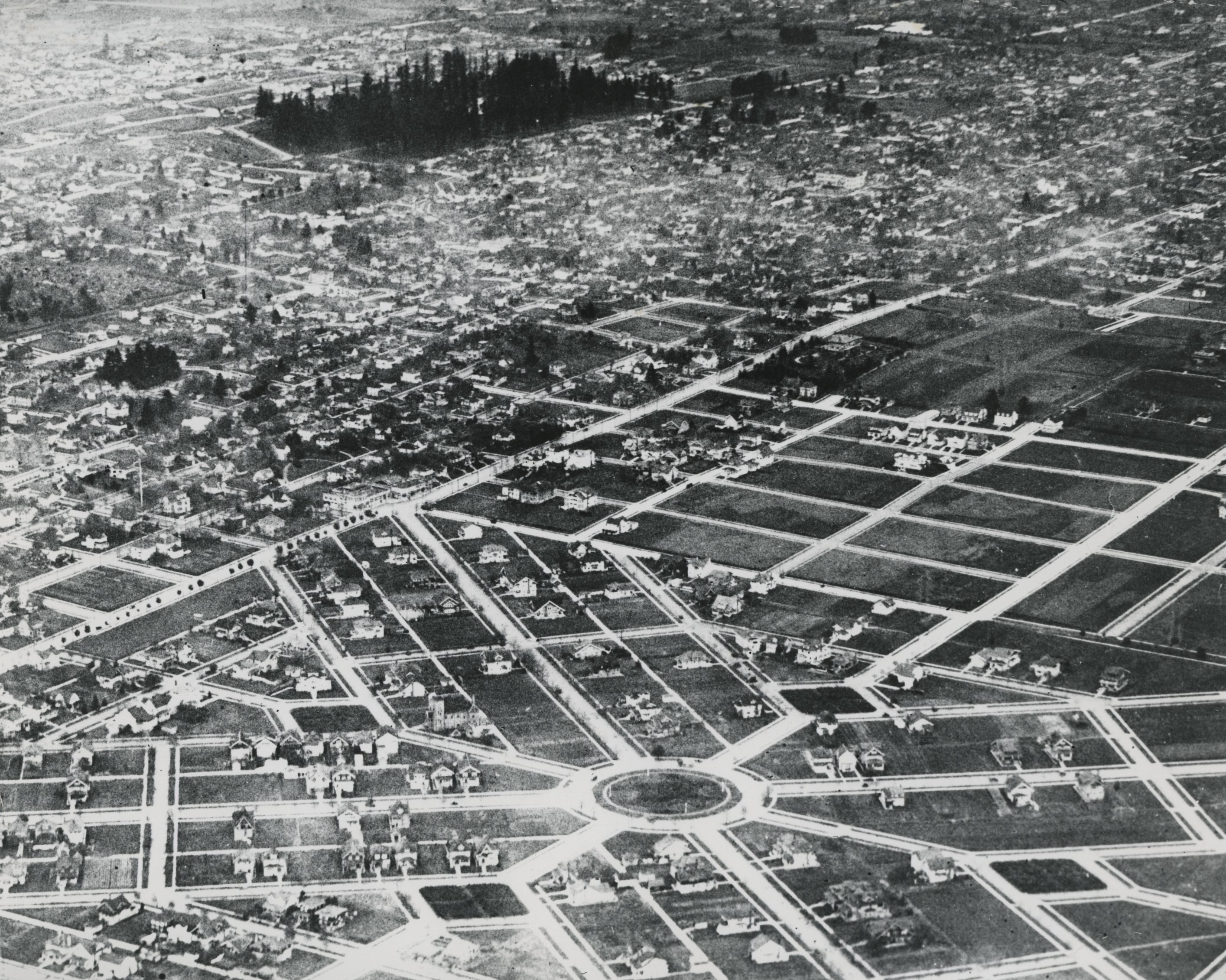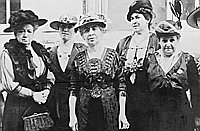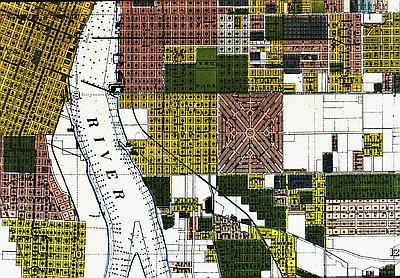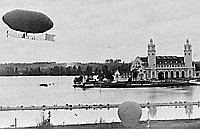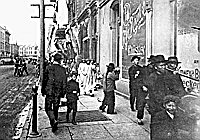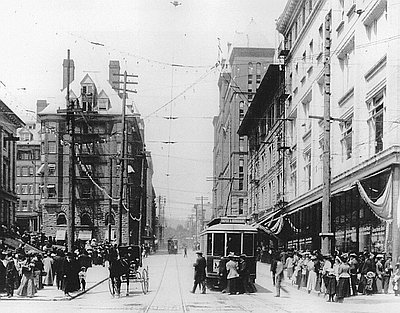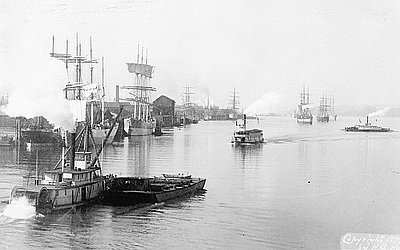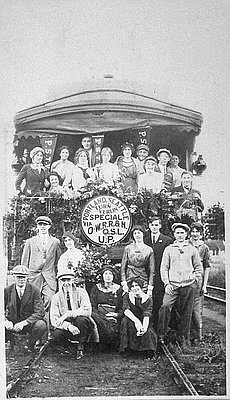An investment in the early 1880s by William Ladd illustrates how local bankers made fortunes through real estate speculation and political influence. Ladd invested $10,000 in a 126-acre plot in East Portland bounded by Hawthorne and Division Streets, and Twelfth and Twentieth Avenues. While the area was not completely platted for homes until the mid 1920s, by the mid 1890s an electric trolley line across the Madison Street Bridge to Hawthorne Street made the area easily accessible to downtown. A new water main from the Bull Run reservoir—whose route was approved by the Water Commission on which Ladd sat—provided fresh water.
The subdivision soon had a market value of over a million dollars. The developers, influenced by some early ideas about neighborhood planning, platted the major streets to run diagonally and to intersect at a circle in the middle. Side streets met at odd angles or ended in small parks. Though surrounded by what became commercial areas, Ladd’s Addition has remained residential ever since. New developments in turn-of-the-century Portland, such as Alameda and Laurelhurst, enacted deed restrictions that targeted particular racial and ethnic groups, including Chinese, Japanese, and African Americans, from purchasing or leasing property in the neighborhoods. While early deed restrictions in Ladd’s Addition did exclude Chinese from settling in the neighborhood, increasing numbers of families had moved into the subdivision in the 1920s. By 1939, the Portland Realty Board informally designated Ladd’s as open to Chinese residents.
Downtown Portland by 1890 was also a worthwhile location to visit. Large palaces of entertainment and shops for all segments of society dotted major thoroughfares. By 1875, William Ankeny had completed the New Market Theater as a three-tiered emporium on Second Street near Burnside. Only a block from the Turnverein gymnastic center, it featured a 1,200-seat theater where boxing exhibits were held. The Casino Opera House opened in 1884 at Park and Washington, a more sedate part of town. Its 1,200-seat auditorium featured vaudeville. The Marquam Grand Opera House, which specialized in concert music for the elite, opened in 1890 on the north side of Morrison between Sixth and Seventh. Its general manager, Samuel Friedlander, even brought opera singers and pianists to entertain his B’nai B’rith lodge, whose members patronized the opera house.
In 1887, the city’s leading bankers subscribed over $500,000 to complete the Portland Hotel, whose foundations Henry Villard had abandoned after his bankruptcy. Opened in 1890 across Morrison Street from the Marquam Grand Opera House, the hotel was a massive six-story masonry building with an interior court for carriages; for fifty years, it was a downtown landmark. Over the next fifteen years, Morrison Street was also where the major department stores located, each occupying its own block: Meier and Frank, Olds, Wortman, King; and the elegant Lipman, Wolfe & Co. Hotels, theaters, and specialty stores filled in smaller spaces.
As Portland accumulated railroad yards and became one of the world’s major ports for shipping grain and timber, entrepreneurs lined the banks of the Willamette with foundries and machine shops, sawmills, furniture manufacturing companies, flour mills, and meat-packing plants. Most of the industrial sites, like the Doernbecher Furniture Company, William Ladd’s Portland Flouring Mills, Simon Benson’s Benson Logging and Lumber Company, and Henry Weinhard’s City Brewery were locally owned.
© William Toll, 2003. Updated and revised by OHP staff, 2014.
